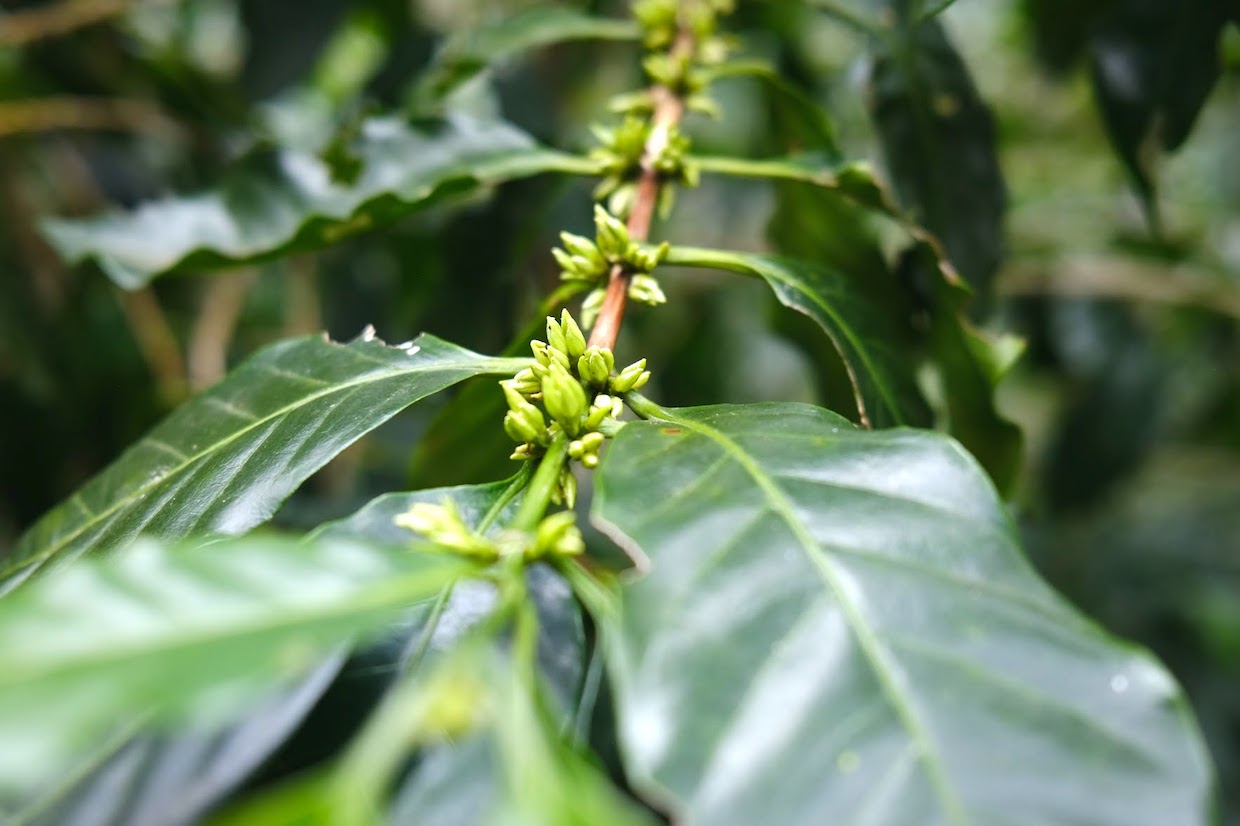Carmen Caballero | June 16, 2025
- Amid rising temperatures and shrinking arable land, Colombia’s coffee industry has become a global model of how agriculture can adapt to climate change.
- Colombia’s innovations have reduced emissions, enhanced biodiversity and improved farmer livelihoods.
- Supportive national policies, public-private collaboration and targeted incentives have enabled Colombia to align agricultural practices with global climate goals.
Climate change poses an urgent threat to global agriculture, endangering food security, economies and ecosystems. Yet, Colombia’s coffee sector shows how agricultural industries can adapt and thrive while advancing sustainability.
Colombia’s coffee production is a scalable example of mitigating environmental risks and enhancing resilience by integrating climate-smart practices, fostering biodiversity conservation and promoting carbon sequestration.
Adapting to climate change
Colombia is the world’s third-largest coffee producer, yielding about 14 million bags annually and some 2.5 million Colombians depend on coffee for their livelihood. At the same time, rising temperatures and erratic rainfall threaten to shrink Colombia’s suitable coffee-growing area by up to 50% by 2050.
Rather than accepting decline, Colombia’s coffee industry – and its growing cacao sector – has embraced innovative practices and policies that provide critical insights for global efforts to align agriculture with sustainability and climate goals.
Farmers in Colombia’s mountainous coffee zones are adopting climate-smart agricultural practices that balance productivity with environmental stewardship.
Providing cover
Many Colombian growers cultivate coffee under the canopy of native trees, mimicking a forest ecosystem. Shade-grown coffee farms provide rich habitats for birds and wildlife while naturally controlling pests and enriching soils.
Research shows that such systems offer ecosystem services. Birds act as pest predators and shade trees, such as Inga, fix nitrogen, reducing the need for chemical fertilizers.
Crucially, the canopy also lowers temperatures on the farm, a vital buffer against rising heat. By maintaining tree cover, coffee agroforestry conserves biodiversity and creates a cooler microclimate that helps coffee plants cope with climate stress.
Investing in research
Colombia has invested in science to breed coffee plants suited for a changing climate. The National Coffee Research Centre (Cenicafé) has developed varieties that include Castillo and the new Cenicafé 1 hybrid that resist diseases (such as coffee rust) and tolerate higher temperatures.
These varieties maintain high yields and cup quality even under climate stress, ensuring farmers can adapt without sacrificing income. By distributing millions of improved seedlings, Colombia is future-proofing its coffee plantations against warming temperatures and novel pests.
Technological responses
Traditional wet processing of coffee uses large volumes of water and often pollutes streams with coffee wastewater.
In response, Colombian engineers pioneered eco-friendly mills that drastically cut water usage and reuse coffee by-products. Technology, such as the Ecomill®, allows farmers to process coffee with minimal water, reportedly saving 10 billion litres of water per year and virtually eliminating contaminated runoff.
As of 2018, one-third of Colombian coffee farms have adopted these ecological wet-mill systems, with more upgrades each year. This shift conserves water in drought-prone areas and protects downstream ecosystems from pollution.
Coffee carbon sinks
Together, these on-farm innovations increase coffee’s resilience to climate shocks while reducing its environmental footprint. Healthier soils, shade cover and efficient water use contribute to lower carbon emissions and higher adaptation capacity.
Notably, a recent study estimated that Colombia’s coffee farms capture over five times more carbon than they emit, functioning as net carbon sinks.
A well-managed shade coffee farm sequesters carbon in tree biomass and soil, helping offset greenhouse gases even as it produces economic crops. This synergy between production and conservation is at the heart of Colombia’s model.
Cross-sector climate action
Colombia’s progress in sustainable coffee is bolstered by supportive policies and multistakeholder partnerships that align with global climate commitments, reflecting the World Economic Forum’s emphasis on fostering cross-sector collaboration to drive large-scale climate action and economic resilience.
By integrating public policies with private-sector innovation and community-led initiatives, Colombia’s coffee sector demonstrates how agricultural sustainability can contribute to global discussions on climate adaptation, carbon neutrality and sustainable supply chains.
Cross-sector pact
In 2021, Colombia became the first country to launch a comprehensive Coffee, Forest & Climate Agreement uniting government agencies, the national coffee federation, private exporters and international partners.
This landmark public-private pact centres on three pillars:
- Promoting climate-smart, agroforestry-based coffee production to improve resilience and farmer incomes.
- Conserving and restoring forests in and around coffee landscapes.
- Reducing greenhouse gas emissions from the coffee sector.
It integrates agricultural adaptation, biodiversity protection and climate change mitigation into one framework. Such policy coordination sends a powerful signal that environmental sustainability in coffee is a national priority.
Embedding ecological principles
At the same time, Colombia is reorienting agricultural policy broadly toward sustainability. The country’s first National Agroecology Policy, unveiled in 2023, embeds agroecological principles into rural development plans.
It was developed through a participatory approach with farming communities, scientists and civil society.
The agroecology policy reinforces what is already taking root in the coffee and cacao sectors by promoting sustainable practices such as organic inputs, diversified cropping and ancestral knowledge.
It also complements Colombia’s climate goals under the Paris Agreement and Sustainable Development Goals, illustrating how national policy can bridge high-level commitments with on-farm action.
Resourcing commitment
Concrete government programmes back these policies with resources and incentives. For example, extension services and credit lines encourage coffee smallholders to replant shade trees or invest in water-saving mills.
In some regions, farmers are required to implement agroforestry practices to qualify for certain subsidies, a nudge that scales up tree planting and soil conservation.
Colombia is driving wider adoption of climate-smart agriculture by tying public support to sustainability criteria. The government is also working with international donors (such as through the UN-backed BioCarbon Fund) to channel climate finance into farm-level improvements.
Adaptable and scalable
Colombia’s coffee and cacao sectors show that climate change is not only a threat to agriculture – it’s also a catalyst for positive change. The sustainable practices adopted in these industries are an adaptable and scalable model in other tropical and mountainous regions facing similar climate challenges.
By integrating climate-smart techniques, strengthening public-private collaboration and aligning policies with sustainability goals, Colombia’s approach offers replicable solutions for building resilience in agricultural economies worldwide.
By necessity, this country has become a living laboratory of sustainable farming, where hillside plots double as carbon sinks and farmers become stewards of biodiversity.
The journey is ongoing and not without challenges (farmers still face volatile markets and climate extremes) but the progress to date shows positively how an entire industry can turn towards sustainability.
For business leaders, Colombia’s model highlights the value of investing across the supply chain – from funding research on resilient crops to providing incentives for farmers to conserve forests – not just as philanthropy but to secure the future supply of quality products.
For policymakers, it reinforces that aligning agricultural development with climate goals can yield economic, social and environmental dividends. And for sustainability professionals and practitioners, it offers concrete practices and partnership frameworks to adapt to different contexts.
Carmen Caballero
Carmen Caballero is the president of ProColombia.
Tags: agroforestry, cacao, carbon neutrality, Carmen Caballero, Cenicafe, Cenicafe 1, climate adaptation, climate change, Colombia, Colombian Coffee Growers Federation, FNC, Procolombia, shade










 English (US) ·
English (US) ·